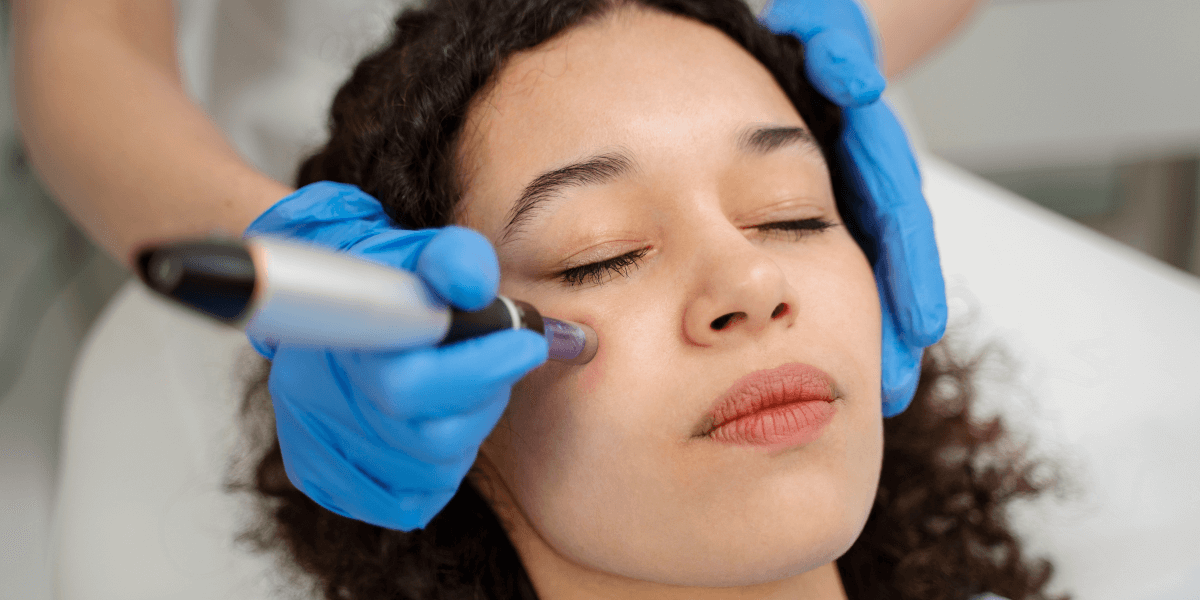Various changes occur in our body as we age. These changes include differences visible on the skin in facial wrinkles or dropped cheekbones. However, these changes are natural and occur when we lose part of the subcutaneous fat supporting our skin. Over time, the skin on the center of our faces slips downward, causing our cheeks to droop somewhat and form wrinkles.
As you might expect, dermal fillers are one of the most popular ways of skin rejuvenation today. Dermal fillers can help lift and support your skin. According to research, more than 1 million people get dermal fillers yearly, and their popularity continues to rise. In 2023, more than 4 million dermal filler treatments were performed. With this, you can understand how popular this procedure is.
In this blog, you will learn important things about dermal filler treatment.
What Are Dermal Fillers?
Dermal fillers are soft, gel-like substances injected beneath your skin to add volume and smoothness. This cosmetic filler treatment is becoming popular and can address common skin issues.
Dermal fillers are approved by the Food and Drug Administration (FDA) and can be made from a number of ingredients, both natural and synthetic. Depending on the type of ingredient, dermal fillers can be classified into four types, which include:
Hyaluronic Acid Fillers: Hyaluronic acid (HA) is one of the most commonly utilized chemicals in dermal fillers. HA is a naturally occurring ingredient that helps keep our skin moisturized and volumized.
Polylactic Acid Fillers: Polylactic acid is a biodegradable synthetic substance that creates medical items like dissolvable stitches. Fillers made from this substance can stimulate collagen production.
Calcium Hydroxyapatite Fillers: These minerals are usually present in human bones. That is why this filler is an excellent choice for face sculpting and contouring. It is denser than HA; therefore, the impact lasts longer.
Polymethylmethacrylate Beads Fillers: These are tiny beads made from synthetic liquid. This substance is often used to fill in deeply embedded wrinkles or plump up your lips, and it lasts longer than other types of fillers.
See Also: Daxxify vs. Botox: A Battle of Identity and Beauty
How to Know Which Dermal Filler to Use
You will need to consult a certified cosmetic surgeon or dermatologist to know which type of dermal filler suits you. The doctor will decide which filler you need based on the location of your face that needs this treatment. This may include:
- Cheekbones
- Chin
- Lips
- Nasolabial folds
- Jawlines
- Under-eye hollows
Why Do People Use Dermal Fillers?
Dermal fillers are ideal for you if you are looking for a non-invasive skin treatment. You can opt for dermal fillers if you have deep under-eye circles, sunken cheekbones, thin lips or lip lines, and wrinkles on nasolabial folds.
Dermal fillers are usually used for the following:
- Facial sculpting
- Filling out the cheeks
- Filling in deeply-embedded wrinkles
- Plumping the lips
See Also: IPL and Microneedling: Exploring the Best Skin Treatment for Superior Results
Precautions to Take Before Getting Dermal Filler Treatment
There are necessary precautions you should take before getting a dermal filler treatment. Firstly, you should visit a board-certified plastic surgeon or dermatologist with knowledge and experience in this field.
Secondly, understand the potential risks and side effects, such as swelling or redness. Follow post-treatment instructions, like avoiding strenuous activities or excessive sun exposure. These precautions help ensure a safe and satisfactory dermal filler experience, enhancing the chances of a successful and natural-looking result.
The third and one of the most important ones is that you should avoid buying dermal fillers from the black market or the internet, as they can contain various non-sterile substances.
What to Ask the Physician During the Consultation?
Talk to your physician about the goals you want to achieve with dermal fillers and how they can help. This is important, as your physician can suggest other treatments alongside dermal fillers to achieve your goals.
You should also ask them to show before-and-after photos of previous clients who got dermal filler treatment.
Another thing you should keep in mind is that you and your physician should discuss the realistic results that can be achieved with this treatment.
Possible Side Effects of Dermal Filler Treatment
Dermal filler treatments may have side effects. Common ones like swelling and bruising usually fade without medical attention. However, severe effects such as infection or vision problems need urgent medical care. Here are some of the possible side effects of dermal filler treatment you can have:
Common Side Effects (Do not require medical attention)
- Swelling
- Redness
- Bruising
- Tenderness
- Itching
Serious Side Effects (Require immediate medical attention)
- Infection
- Allergic reactions
- Lumps or nodules
- Vision problems
- Severe pain
- Skin necrosis (rare)
Who Should Avoid Dermal Filler Treatment?
Generally, dermal filler treatment is a safe option. However, you should avoid this treatment under the following conditions:
- If you are pregnant or have recently given birth
- If you are going to get a dental treatment
- If you are allergic to the substance present in the fillers
What Is the Cost of Dermal Fillers?
The cost of dermal fillers varies depending on where you go and the specific type of filler used. Generally, it can range from a few hundred to several thousand dollars. Different areas of the face may require different amounts of filler, affecting the overall cost. Additionally, the experience and expertise of the person administering the treatment can influence the price.
Are Dermal Fillers Permanent?
If you are unhappy with how your filler appears, you can request an adjustment. Depending on the type of filler, your cosmetic surgeon can either inject more of it or dissolve it. However, when injected skillfully, the filler seems natural, and any alterations created are minor and difficult to detect.
How Long Will the Results from Dermal Filler Treatment Last?
Most dermal fillers are not permanent, and you must visit a trusted practitioner to get the treatment again. Here is the time limit for each filler:
- Hyaluronic acid fillers can last up to a year
- Calcium hydroxyapatite fillers can last up to 18 months
- Polylactic acid fillers can last up to 2 years
- Polymethylmethacrylate beads fillers for a long time with several treatments
Enhance Your Look with Dermal Filler Treatment at The Youth Fountain
At The Youth Fountain, our certified and experienced aesthetic physicians offer tailored dermal filler treatments with the highest precision and safety standards for the best outcomes. If you are looking for the best dermal filler treatment options in Freehold, NJ, contact us today to learn more about the rejuvenation procedures we offer.



